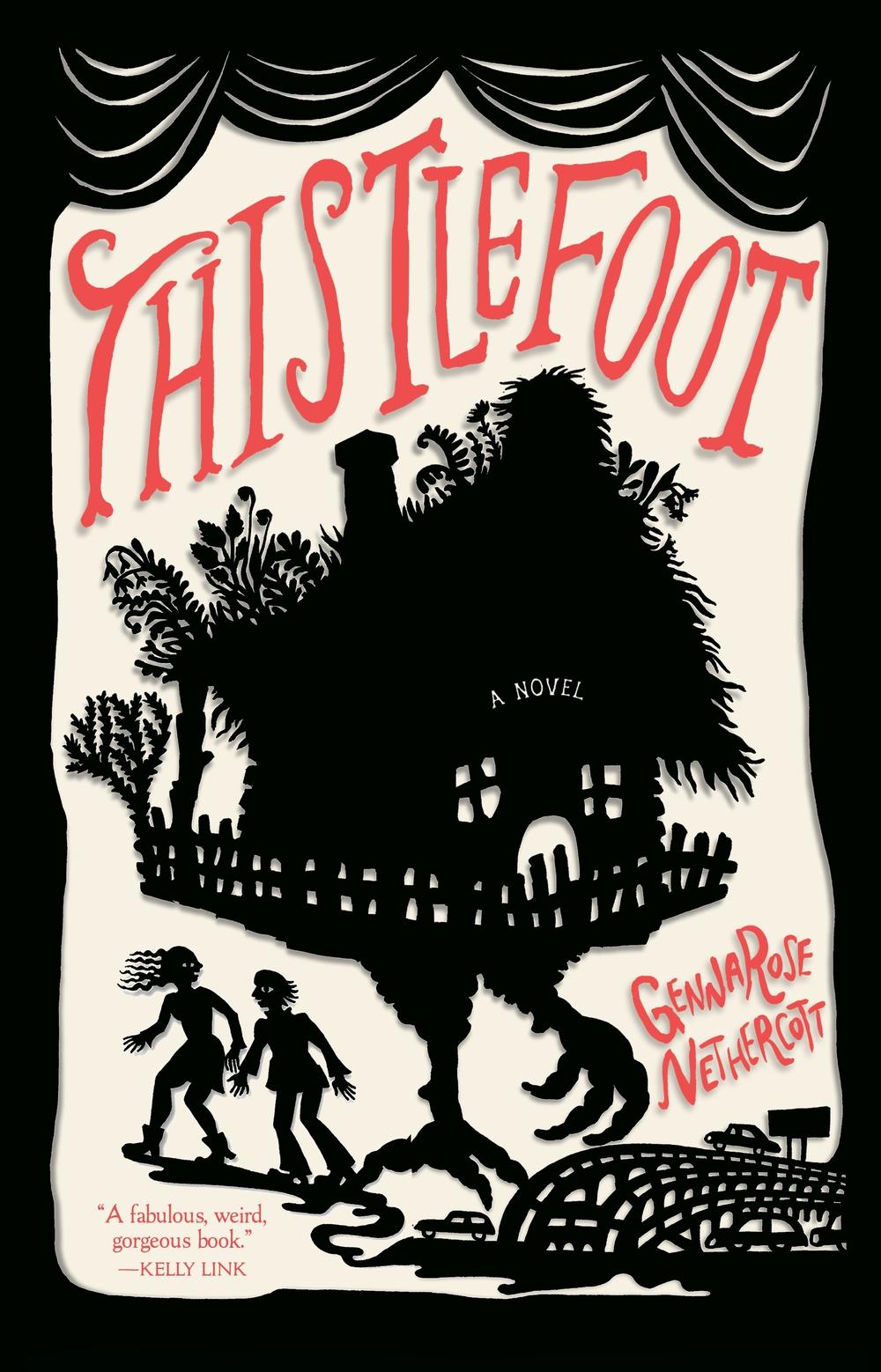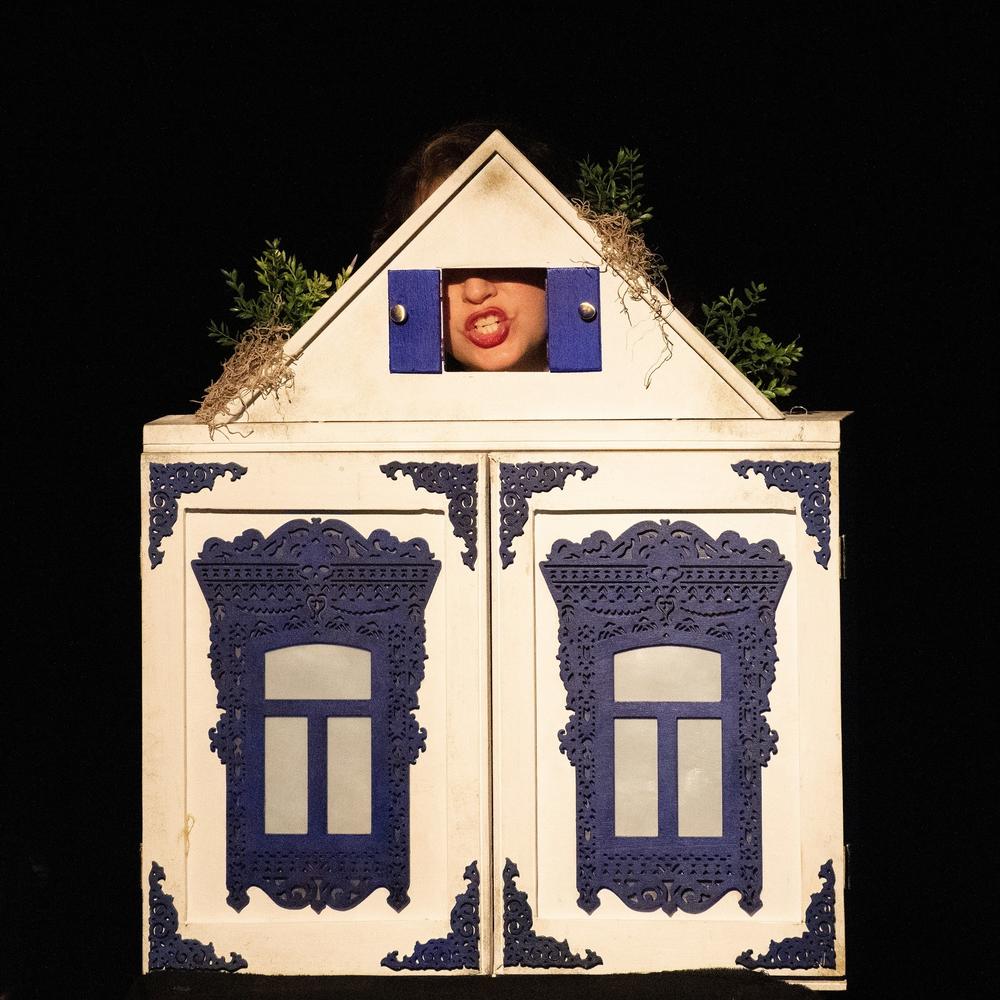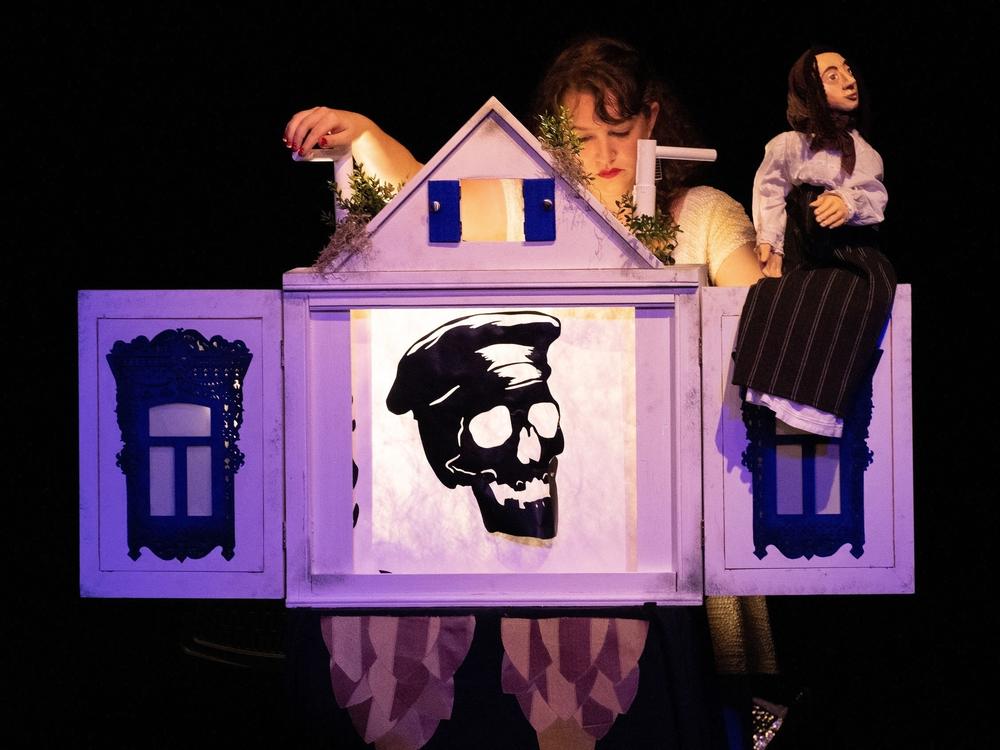Section Branding
Header Content
GennaRose Nethercott uses folklore to explore a painful, and personal, history
Primary Content
For centuries, the crone Baba Yaga has been a figure in Slavic folklore — the kind of character who might lend you a magical candle or kill you and use your skull to decorate her house on chicken legs.
In her debut novel, Thistlefoot, author and folklorist GennaRose Nethercott reimagines Baba Yaga as a Jewish woman living in an Eastern European shtetl in 1919, during a time of civil war and pogroms. Through the crone and her story, Nethercott explores the idea of folklore as a retelling of a memory too painful to talk plainly about.
"Stories allow us to grapple, but it also allows us to protect ourselves," she says. "Plus, it allows us to have a little fun on top of it."
The fun begins with Baba Yaga's ancestors, two contemporary American siblings named Isaac and Bellatine Yaga. The two have been estranged for years when they receive word of a mysterious inheritance. Curiosity wins over their estrangement, and they reluctantly reunite at an old shipyard to receive their inheritance: a sentient house standing on chicken legs. Bellatine falls in love with the house, naming it Thistlefoot, while Isaac just sees dollar signs. He convinces his sister to convert the house into a mobile theater and take it on the road as a traveling puppet show.
Nethercott says she's always been intrigued by the idea of "a home that can also be on the run — it's sort of my fantasy. It's what I'm always longing for."
Then, the question she wanted to explore became: "What does it look like when folklore and the past start to look into the present? How does the past and the present tangle?"
The book dips often into the past, when Baba Yaga lived – and the horrible night when her little town of Gedenkrovka burned. These chapters are inspired by a real period in history, which for Nethercott is also a personal one.
"My family on my mother's side is from a small Jewish shtetl in what is now Ukraine," she says. "I basically just changed the name of the town Rotmistrivka where my family's from, and the historical events that we slowly learn happen to Gedenkrovka are actual historical events that happened to Rotmistrivka."
These chapters are brutal, and writing them was an intense experience. Nethercott burst into tears after finishing one particularly difficult scene. Still, writing the book helped her recognize herself a little more.
"How much of our own little tics and anxieties and questions are something that we've inherited," she muses. "I mean, it always helps to have an understanding of why we are the way we are."
The siblings in her book each have their own inherited quirks. For Isaac, it's a constant, itchy restlessness that keeps him on the run; for Bellatine, a supernatural ability that terrifies her.
"They have no idea why they have them, and it's through learning where those came from that they're able to heal," she says.
Folklore allows us to tell stories too painful to discuss directly
Nethercott says that while her book is specifically a Jewish diaspora tale, "I think it speaks in a larger way to many of our familial stories. So many of us came to this country as refugees generations back and don't necessarily know the full story."
Isaac and Bellatine must learn the full story of what happened to their ancestor in order to defeat a sinister figure that pursues them. And that story gets dark and heavy at times, but it isn't dour.
That's thanks in large part to Thistlefoot, the house, who narrates the tale of Baba Yaga, the birth of the house itself, and the creation of Baba Yaga's two daughters with a pastry. Its voice guides the reader through myth and legend – and the day in history when Gedenkrovka's well was poisoned. At times solemn, at times playful, the house speaks to the reader like a storyteller to a crowd gathered around a campfire.
"I drew from Isaac Bashevis Singer's short stories and Sholem Aleichem's short stories of Tevye the Dairyman, who we know from Fiddler on the Roof and these kind of cheeky, almost teasing voices," Nethercott says.
It was important for Nethercott that her book be, at its heart, an adventure. That is, after all, one of the roles of folklore in people's lives.
"When there are things that are too painful or too taboo for people to discuss directly, they would rather invent this really whimsical, fantastical, almost outlandish story in parallel," she says.
"I think being able to indulge in joy and play is the best way to learn and to heal and deal with more difficult topics."
For her part, Nethercott may have finished writing Thistlefoot the novel, but she's not done playing in this world just yet. So she collaborated with artist friends to create her own traveling puppet show to bring her folktale to life at bookstores around the country.
"I couldn't let Isaac and Bellatine have all the puppetry fun, that just wouldn't be fair," she laughs.
On the day of her book launch, Nethercott stood on a dark stage in an old barn, crickets chirping outside. With her is a box made to look like a house, with blue window shutters, cut into lace-like patterns, and a little door in the roof. She stepped behind it and opened the door, so her face peered through.
"Before I was a house, I was a baby chick, cracked loose from an egg," she announced, reaching to the front of the box and opening the doors.
At one point in the evening, she brought out a Baba Yaga puppet, who sat on the roof, talking to a little skeleton hanging on the backdrop.
"Good morning, Reb Skeleton," Nethercott intoned in her deepest Baba Yaga voice. Then, with a nasally whine, she replied, "Good morrrrning, Baba Yagaaaa," while pulling on a string to make the skeleton dance.
Nethercott's puppet show – as with her book and the tales that inspired it – balance fun and solemnity, joy and suffering. It's why she loves to study folklore, and now, to write it.
"Folklore allows us to be playful and fun and like wide-eyed in awe," she says. "And it also allows us to address some things we may not have the ability to address otherwise."
Including the memories that haunt each of us, whether we know it or not.
Copyright 2022 NPR. To see more, visit https://www.npr.org.



